Australia: Heading South from Sydney Going West
Canadian cruisers Brent Crack and Mary Bevan are mid-circumnavigation. They decided to take the route less travelled by foreign sailors around Australia and headed south from Sydney to sail around the bottom of the continent, from east to west.
Published 1 year ago
Watching for a Weather Window South
After anchoring in Sydney in a harbour between Glebe and the fish market for three weeks prior to the 2024 New Year fireworks, we left towards the south on New Year’s Day. During those three weeks, we watched perfect sailing weather for our route go by in the wind forecast. As it happens, that changed just in time for us to leave. With only a two-day window before a big southerly wind blew in, we decided to bypass stops we had originally planned on and instead made the jump straight to the town of Eden.
A pleasant sail south from Sydney to Eden
Our sail to Eden was one of our most pleasant. We had checked the forecast for currents and saw that if we sailed about 10nm from land, we would find ourselves helped along the coast. We made excellent time with the aide of the 3.5 knot current and arrived to find Eden as a perfect sheltered spot for our anchorage right near town. The town itself, though a steep uphill walk after the dinghy dock, had good supplies and reasonably priced food and drinks.
For an anchorage, Eden provides two free mooring balls and a new break wall built around the town which would give all weather surge and swell protection — but with a number of uncharted rocks to be aware of. Due to the rocks which we only saw during low tide while in our dinghy, we wouldn’t recommend anchoring inside the break wall with a night time arrival. A few boats were anchored behind the wall but we chose to anchor in the sand bay.
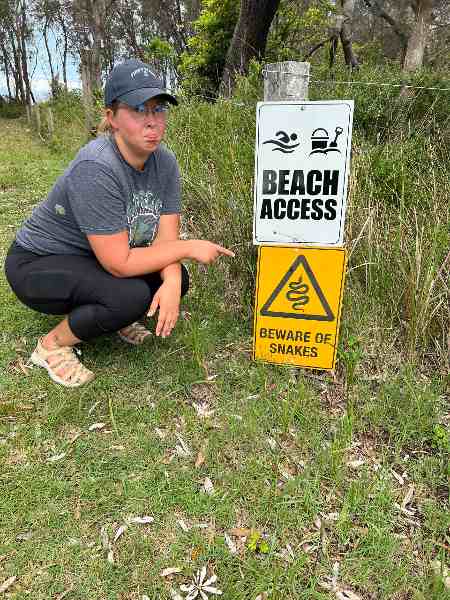
When the southerly winds arrived, we crossed the bay to the south western side and anchored behind some large cliffs on an all sand bottom. There, we were joined by two other cruisers for the same purpose.
For weeks, our plan had been to depart Eden for Tasmania with the winds we had watched while in Sydney. Unfortunately for us, the 10-day weather forecasts no longer showed any hints of a comfortable crossing of the Bass Strait. The perfect forecasts had changed to a series of fronts every few days. The best option we could see was a tight window with only a six-hour buffer between our potential arrival and 45+ knot winds. While we had really looked forward to Tasmania, we made the choice to skip it and head west towards Melbourne.
Sailing from Eden to Melbourne
Ahead of our journey we had read online through notes from other sailors to expect wind bullets and acceleration zones while passing Wilson’s Promontory — the cape on the south east corner of Australia, jutting out towards Tasmania. Warnings indicated that even in extremely light easterly winds, the acceleration could quickly reach 40 knots. In our review of the terrain it was readily apparent why these wrap around winds would occur.
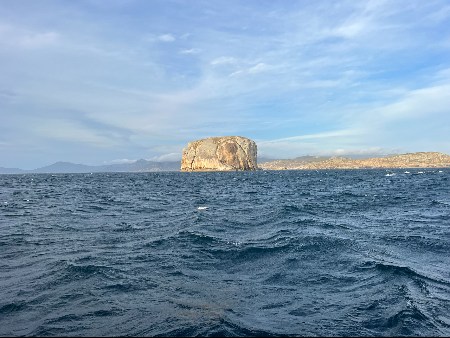

We started with 10 knots of wind directly behind us as we approached the cape with our only indicators of changing wind patterns being the increase of waves in a line of whitecaps ahead. We decided to heed the warnings and reef much earlier than we normally would and we were very glad to as our 10 knots became 35 knots and higher in less than five minutes. Winds gradually slowed back down after we rounded the cape. Local knowledge saved us a lot of grief, thank you to the sailors who came before us and chose to share their experiences!
We chose San Remo as our next stop, anchoring as the only boat across from the town on a large sand pad with significant current coming back and forth through the channel. The town was nice but had a few too many tourists for us. We continued the next day towards Melbourne and Port Philip.
Melbourne: Exploring the smaller towns and suburbs
The city of Melbourne is located in a huge bay with a fairly narrow entrance when compared to its size. A similar example would be the San Francisco Bay area in the United States. Looking at the charts, we suspected the current may be strong but couldn’t find anything written online. We made our plans around the tidal station at the entrance and arrived exactly at slack tide — our mistake.
Significant outbound current and large standing pressure waves greeted us as we entered the bay. Fortunate for us, we had light winds. If the weather had not been kind, we would have had a very different experience entering the bay. As it was, it took both engines running hard for an hour to get us into Port Philip Bay — and Melbourne was still another 30 miles across the bay to go! Locals have advised us now to only enter or exit on the exact mid-way point of the tide which is when the currents are the lowest. They informed us that it can be dangerous to cross and boats have sunk over the years, including a Pilot vessel.
Rather than cross straight to Melbourne, we decided to work our way along the east coast of the bay to explore the smaller towns and suburbs. We chose Sorrento as our first stop.
The anchorages in the Sorrento area are jammed full of boats on moorings. While we had read that there were free visitor moorings in the area, we couldn’t find them. We anchored on the outside of the mooring fields on a Friday night, only to find our boat being used as a pylon for all the jet skis and go-fast boats the following day.
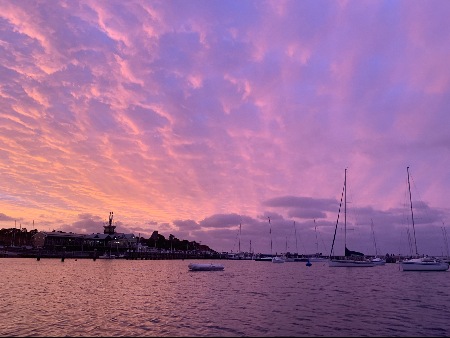

The town of Sorrento is a big tourist spot and at the time had tons of people there for the tail end of their summer holidays. We found the town to be full of clothing stores and expensive restaurants, clearly catered to the tourists who frequent there. We were still able to get groceries, but our walk was longer than most would like from a grocery store back to their boat. Between the anchorage and the tourists, we didn’t stay long.
Our next stop was the town of Mornington where we were the only boat anchored beside much fewer moorings and a marina with a few others there. We had a nice spot over sand, sheltered from all but westerly component winds and we stayed a few days there. The town had everything we could want or need, all within a close walk of the dinghy dock.


Melbourne City: A warm welcome for foreign sailors
After Mornington, we sailed up to Melbourne and stayed at the Anchorage Marina so we could explore the city. The marina is a small home to a vibrant and engaged live-aboard community. From the moment we approached the marina, we had residents greeting us and guiding us as to where we could go for supplies and meals. It became apparent that very few foreign cruisers stop there in a year. Australians circumnavigating the country are far more prevalent while foreign sailors are few and far between.
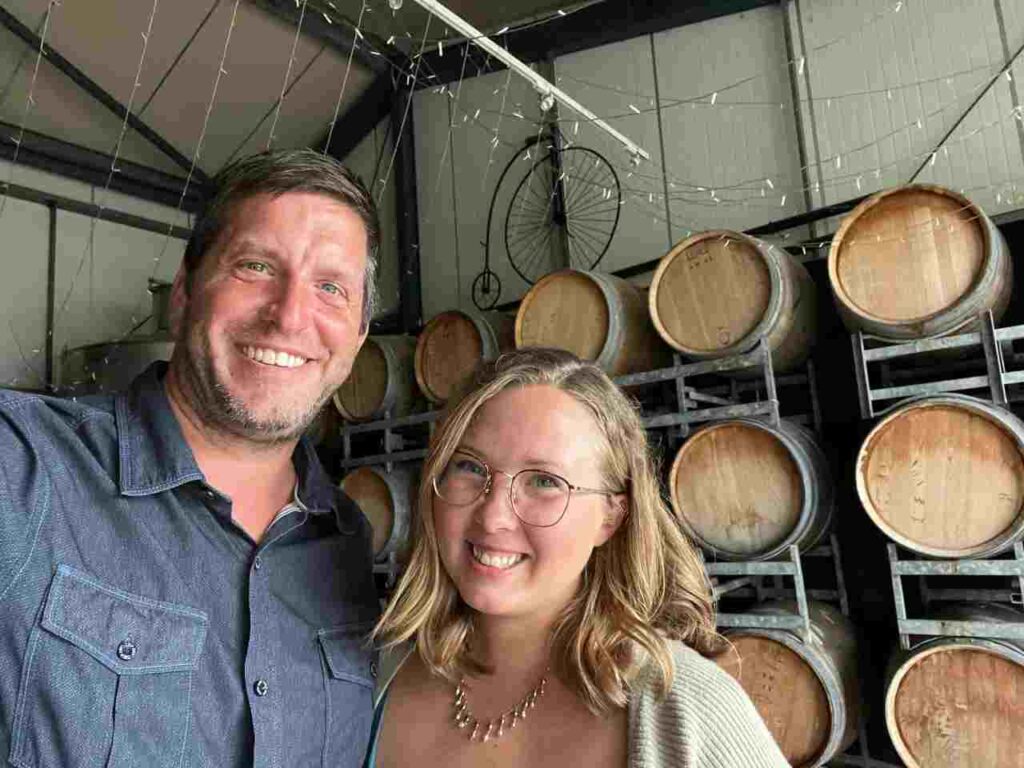

While we had planned to explore the west coast of Port Philip Bay before heading further west along the southern coast of Australia, weather once again changed our plans. If we chose to stay, we could end up staying longer than we wanted with the wind keeping us from moving west. We decided to depart and move to Apollo Bay with just an overnight sail down the coast.
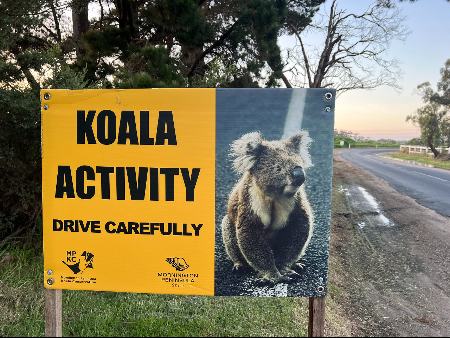

Wind Forecasting in Australia
Our experience with wind forecasting in Australia has been challenging. The forecast is rarely accurate, but rather 10-15 knots different and typically in a range of 20 degrees or so for direction. Our departure from Melbourne was met with contrary winds which slowed our departure and had us arriving at the entrance to Port Philip Bay at slack tide instead of mid-tide. We once again had a slow grind with both motors to get out and back into open ocean.
No welcome for visiting yachts at Apollo Bay
Charts and satellite photos showed Apollo Bay as a nearly completely enclosed area with boats hidden in shelter. We planned to make it there before the pending weather and shelter for 24-hours to wait it out. We arrived at exactly the moment the sun rose. There were a number of boats anchored and moored in the bay behind the breakwaters as well as a few in the newly built town marina. We found a spot and dropped our anchor, only to be told by locals as we let out chain that we could not anchor and could only stay in the marina. We eyed-up the marina, lined with black tires just waiting to mark our white hull and that alone had us picking up and facing the weather rather than stay in the town.
A follow-up email to the town indicated that anchoring was prohibited in the town jetty area. They initially advised that this was posted on the town website, but a thorough review of the website indicated nothing was there. The town then agreed that there was no information about the anchoring closure. We have no resolution to this. It was unfortunate to have taken away an hour we could have sailed further had we known ahead of time.
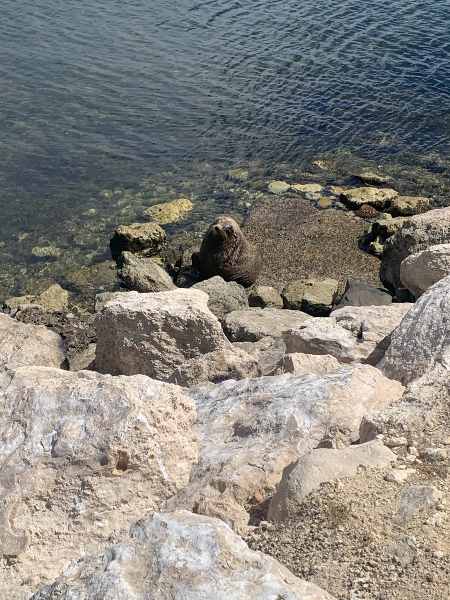
Based off this experience, we reached out to a number of other small towns ahead of us in the state of Victoria. Many of them said that they don’t allow anchoring in the harbour areas and visitors must stay in town marinas. We couldn’t find any information like this on any of the town websites or on charts. We suggest reaching out to towns prior to arrival for information.
We chose Warrnambool as our next stop with anchoring allowed behind a massive concrete retaining wall. The next day we explored the town and found a large farmers market. We bought wine from a hobby winemaker and selected a few other items along the way.
Robe: Beware of Lobster Pots!
Up next, Robe. Our overnight sail was interrupted with misadventure. Just after midnight, our speed slowed from 6 knots to 3 knots with no change to the wind or current. After a perplexing minute, a small float was spotted behind the boat. After tens of thousands of nautical miles, we caught our first lobster pot. The only way to free it from the rudder was to cut the trap off then dive in the 11 degree Celsius water to clear both the rudder and propeller. 0/10, would not recommend.
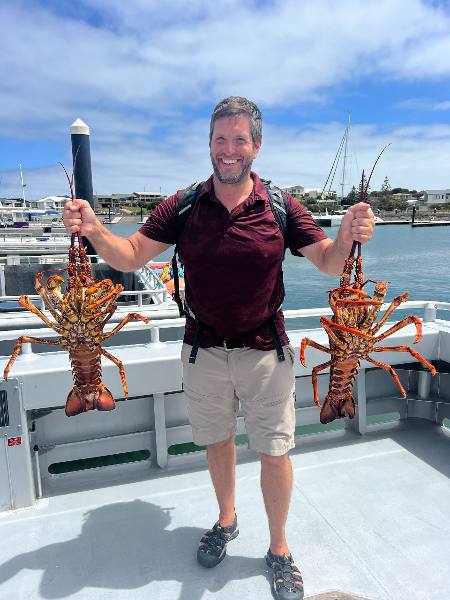

With daylight came visibility and hundreds of lobster pots scattered in every direction — all with small floats which disappeared in the waves. These were difficult to see in the light of day and virtually impossible at night.
We later learned that locals won’t sail at night during the months of October to May, since you’re nearly guaranteed to catch a trap.
While you could anchor outside, we planned to stay in a marina in the town of Robe as we wanted to do some exploring and get a few things taken care of. The town marina is quite new and the docks are in good shape, but the amenities are limited in the marina area. This was more than made up for by the hospitality of the local community.
Shortly after tying up, locals started to swing by and say hello. Very few international cruisers come to Robe and there were plenty of questions about our story and travels. We were fortunate to meet Ruth and Jock, two retired long term cruisers who now live ashore in Robe. They go our of their way to meet any cruisers in the marina and invite them for dinner to talk about sailing. These two experienced sailors have cruised over 50,000nm through South East Asia, Australia and the Indian Ocean. They are a wealth of information on cruising and certainly worth taking the time to get to know.
While in Robe we had lobster and spent a day with a couple of locals on their boat to check their lobster pots. We learned that Robe is considered the rock lobster capital and that October through May is when to expect traps. We were advised never to sail at night in less than 100 meters of water between these months.
Hopping to South Australia’s Kangaroo Island
After Robe, we sailed to Kangaroo Island. We initially stopped at American River which was sheltered, but not particularly interesting. We then moved to Kingscote which had a nice anchorage in front of town, but we chose to move around to the anchorage at the bottom of the hill from Bay of Shoals winery, which was an easy walk and lovely to visit. The owner of the winery has competed in the Sydney to Hobart sailing race many times.
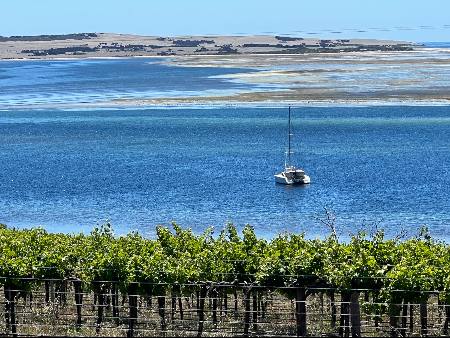
Seeing a good weather window, we chose to sail across to the smaller towns along the east coast of the Gulf of Saint Vincent. We learned here about the helicopters and planes that look for large sharks and use sirens as they circle them. We had one of these sirens start shortly after we had finished kayaking and saw a large fin that hadn’t looked like any of the numerous dolphins of southern Australia. There are so many dolphins that we’ve had as many as ten encounters in a morning crossing from one anchorage to another.
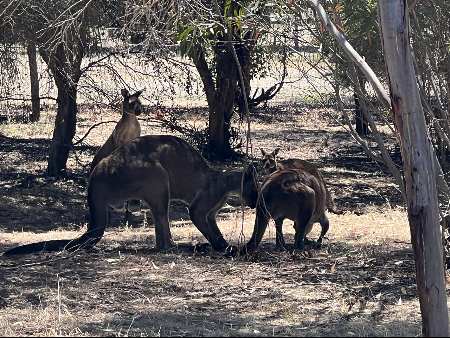
Arrival in Adelaide
We arrived in Adelaide and stayed at the Cruising Yacht Club of South Australia. This allowed us to explore the city with ready access to every service imaginable. Locals at the yacht club were quick to stop by and say hello. The general consensus from them is that international cruisers rarely come to Adelaide as it’s too far up the gulf and off the beaten track. We found it didn’t take long for word to get around once we met our first sailing club member and we made friends quickly with many others.
We were fortunate to be in Adelaide for the final days before the race from Adelaide to Port Lincoln, which is one of the prestigious sailing races in Australia. Many boats were gathered in Adelaide to prep for the race and everyone was in high spirits. We shared with others that our plan was to go to Port Lincoln and they encouraged us to arrive ahead of the race celebrations. We adjusted our timeline accordingly and set off from Adelaide with time to arrive and explore.
What did we learn from sailing Sydney to Adelaide?
A few learnings/comments from us about this leg of sailing Australia:
1) Weather forecasting — rarely accurate. Know that it could be plus or minus 10-15 knots and within around a six hour range of when changes may happen. Additionally, a range of about 20 degrees on either side for wind direction.
2) Cell communications — Telstra is better than Vodofone for Southern Australia. We originally bought Vodofone SIM cards and rarely had service, only to later look into the service maps to find that Telstra has far better coverage for this part of Australia.
3) Night sailing — don’t do it unless you’re in 100m water or deeper. The risks of lobster pots and tuna net pens entangling in your prop or rudder are too great. The locals generally don’t sail at night because of these reasons.
4) Day sailing — there are plenty of day hops and small towns make the best memories. A great way to avoid sailing at night is by stopping at these towns.
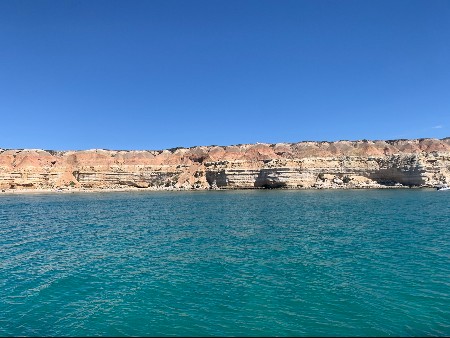

5) Wineries — they’re everywhere. Making more stops means being closer to more wineries. There is a lot of pride in winemaking in Australia and locals are more than happy to share their knowledge or personal stash with you. The rum in Australia is rather terrible, so if you aren’t a wine drinker we suggest giving it a try. In Adelaide there is the National Wine Centre which is a great spot to try a variety of wines from all over Australia.
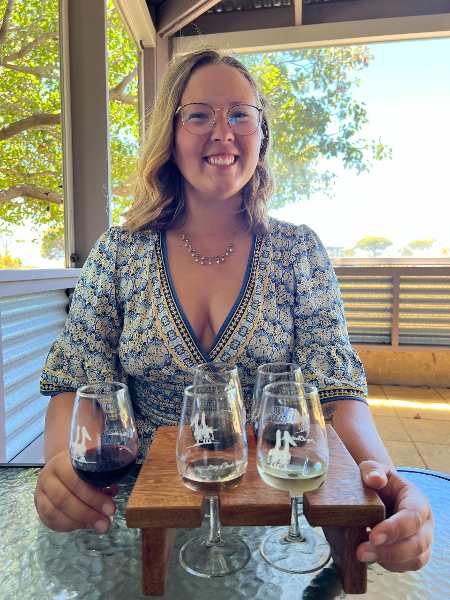
6) Temperatures — colder than expected. While the overall temperatures are generally pleasant, the wind tends to be chilly. The water temperature this year has been colder than typical, as we’ve been told. In areas where the water is normally 23-24C, we’ve had 17-21C. On the water the air temperatures can be quite nice.
Brent Crack and Mary Bevan
SV Knot Safety
………………………………
About the Authors:
Brent Crack and Mary Bevan are two Canadian citizens who have sailed across the South Pacific on a Lagoon 400 catamaran SV Knot Safety. After making it to Whangarei, New Zealand where they hauled out for some repairs and maintenance, they continued their journey westwards – landing in Sydney, Australia in time for New Year’s Eve.
Not wanting to deal with the cyclone season as well as crocodiles, warm weather and not being able to jump in the water, they decided to head south around the bottom of Australia preferring to “go where others don’t.”
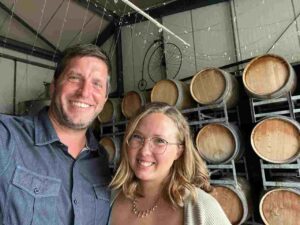

………………………………
The opinions expressed in this article are the author’s own and do not reflect the view of Noonsite.com or World Cruising Club.
………………………………
Other reports from Brent and Mary’s Circumnavigation Odyssey:
- Australia, Sydney: New Year’s Eve Magic and Chaos.
- Cook Islands, Rarotonga: We’d Return in a Heartbeat – Just Not With a Boat!
- French Polynesia: Making Sense of Anchoring Restrictions
- French Polynesia, Society Islands: The Beauty and Disappointment
- French Polynesia, Tuamotus: Coral Bombies, Snorkelling and Sharks
- French Polynesia – A Warm Welcome to the Gambiers
- Pitcairn Island – Well Worth the Journey
- Rapa Nui (Easter Island) – Nothing Short of Amazing
………………………………
Find out all news, reports, links and comments posted on Noonsite, plus cruising information from around the world, by subscribing to our FREE monthly newsletter. Go to https://www.noonsite.com/newsletter/.
Related to following destinations: Adelaide, Australia, Eden, Kingscote - Kangaroo Island, New South Wales, Port Lincoln, Robe, South Australia
Related to the following Cruising Resources: Circumnavigation, Circumnavigation, Pacific Ocean South, Routing





